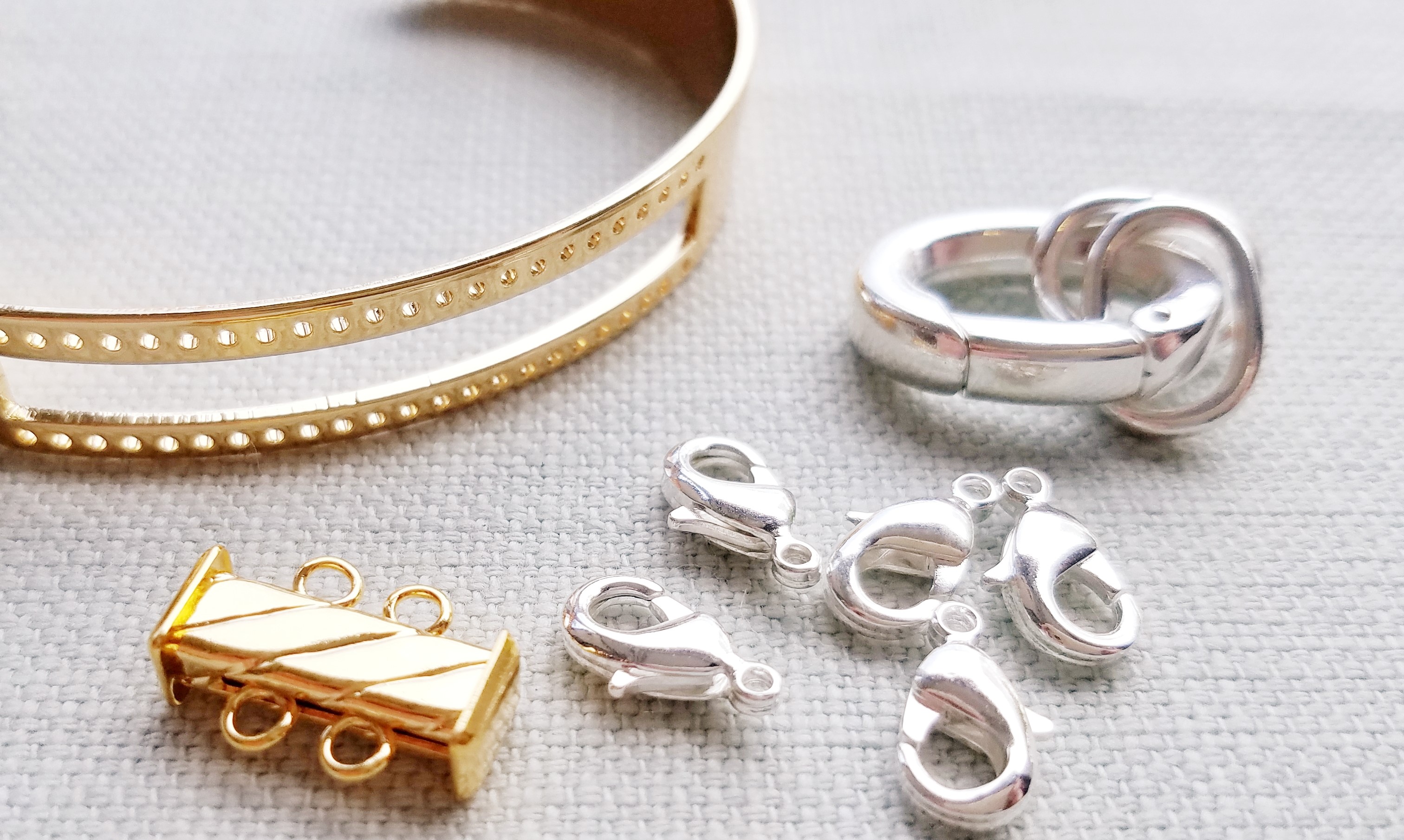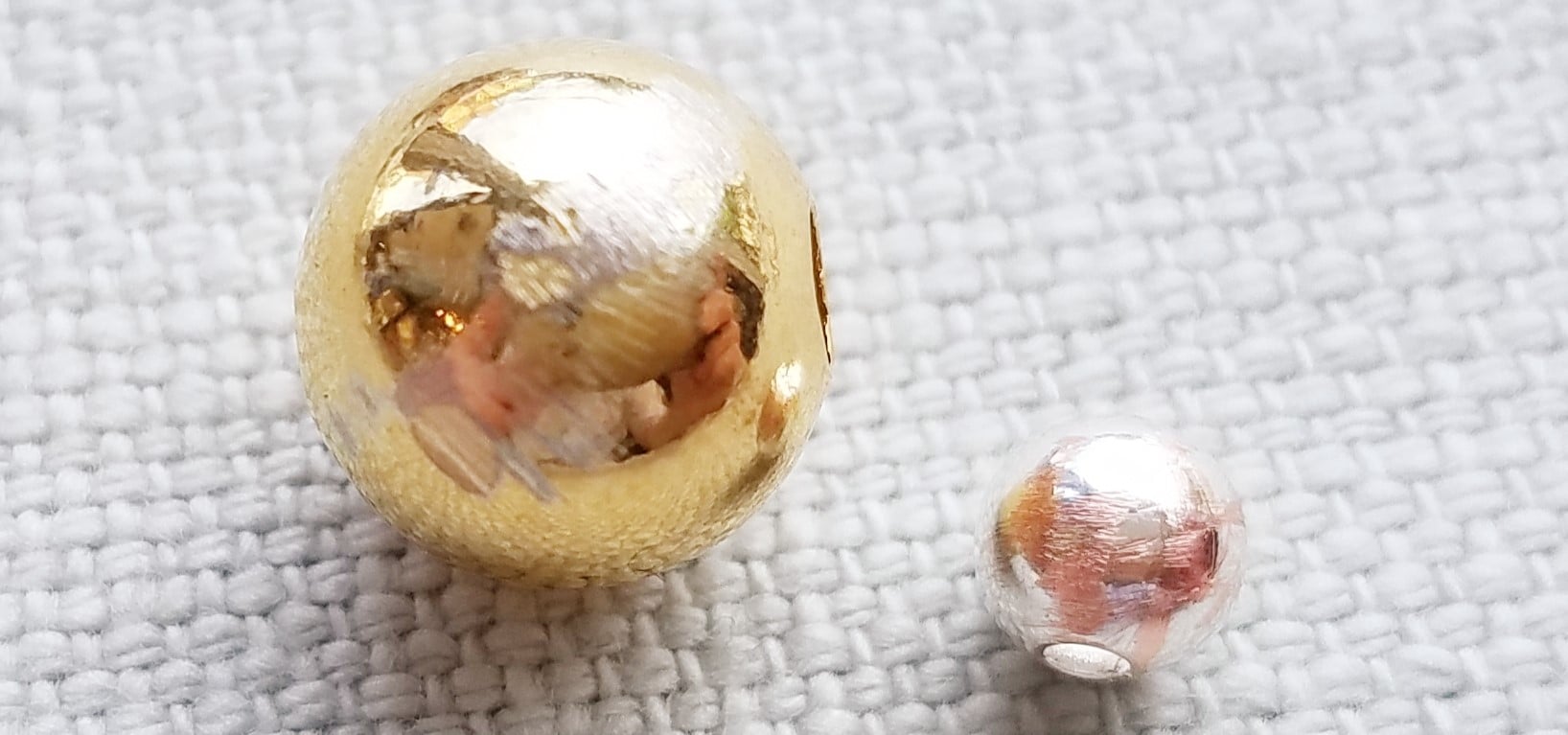- Jewelry-Making Supplies ▾
Design Jewelry with Confidence!
Seed Beads
Thread, Wire, & Stringing Materials
Findings & Components
Everything Else
- Kits & Collections ▾
Assemble Your World
Kits & Collections
- Subscriptions ▾
Want monthly Beading Happiness?
Subscriptions
- Learn to Make ▾
Want to learn more?
- Discounts & Deals ▾
Explore Today's Promotions!
-
Seed Beads
Thread, Wire, & Stringing Materials
Findings & Components
Everything Else
-
Kits & Collections
-
Subscriptions
What You Need to Know About Gold & Silver Used In Jewelry-Making
PAGE VARIABLES - ONLY VISIBLE ON EDIT MODE *
Subtitle
Selecting the right metal beads or findings for your jewelry is important - but also can be difficult if you are unfamiliar with the options. Below I will highlight some practical knowledge so that you are better equipped when selecting metals.
Blog Date
Blog Author
Blog Tags
Blog Category
bodyHtml
Notes: Only visible on edit mode. Update the variables above > save > then reload the page to load the values.

Short Desc and Page Image for the thumbnails showing on other pages.
By Anna Taylor

Selecting the right metal beads or findings for your jewelry is important - but also can be difficult if you are unfamiliar with the options. Below I will highlight some practical knowledge so that you are better equipped when selecting metals.
14K Gold
14k gold is a metal that contains 14 out of 24 parts of real gold, making it very unlikely to cause an allergic reaction. 24k gold, which is pure gold, is very soft and not practical for most jewelry. Therefore, 14k gold is more commonly used. The gold alloy that results from mixing pure gold with another metal retains the color of gold, but is much better suited for the every-day wear that the pieces are exposed to, as well as being less expensive.
Although harder than pure gold, 14k gold is still soft enough that it is best to avoid storing multiple pieces together. Keeping a cloth between pieces will prevent them from scratching each other in your jewelry box.

Sterling Silver
Sterling silver is an alloy, a mixture of two metals. 92.5% of the mixture is silver and the remaining percentage is usually copper. This creates a very soft metal that is easy to bend, wrap, and cut. If you're not sure if you have a sterling product or not, look for the ".925" stamp that is on most sterling silver items. It is a good choice for people who usually have an allergic reaction to metals since it contains very little or no nickel.
The copper in this alloy means that it will tarnish easily. To care for your sterling pieces, use a polishing cloth or wear your piece often! The natural oils in your skin will keep the tarnish from building up. Storing your pieces with anti-tarnish paper will also help prevent tarnish on pieces that aren't worn often. Tarnish is easy to clean, so sterling pieces can always be brought back to their original beauty.

Gold Filled
Gold-filled pieces have a thick layer of karat gold (not pure gold) that is applied over abase metal (a cheaper or less desirable metal). For both silver and gold-filled items, the weight of the outer layer of metal (silver or gold) must be at least 1/20 the weight of the item to be considered "filled." Jewelry containing gold-filled components can be cared for in the same way as 14k gold.
Silver Filled
Silver filled pieces have a thick layer of sterling .925 or pure silver .999 over a base metal. Silver filled items are less expensive than sterling, since there is less silver content, but more expensive than silver plated metals. The silver top layer of silver-filled items is thick enough that it is unlikely to wear off and reveal the base metal beneath. These can be cleaned with a polishing cloth or spray, as with sterling silver. Silver-filled findings and beads are a good option for jewelry-makers who want a higher quality product than silver plated, but don't want the cost of sterling.
Gold-filled and sterling pieces will likely be tolerable for those with allergies. However, if the exterior of the bead or finding is thinned to the point that the interior metals are exposed, the piece will likely become irritating.

Plated
Plated (Gold, Silver, Copper, Brass, Gunmetal) items will be the least expensive and the least durable of all the metal options for jewelry-makers. These items have a very thin layer of the exterior metal over a base metal. This outside layer can easily be worn off by rubbing next to other beads, other items it is stored with, or skin. There is no reliable way to predict how long a plated piece will remain looking like new. This will depend on how long the piece is worn, how much moisture it is exposed to, and the individual wearing the item.
Once the outer layer of a plated bead is removed through wear, it cannot be restored. These components are usually so inexpensive that it is economical to replace worn and discolored parts. These components are also not recommended for people with allergies since the wearer's skin will be exposed directly to the nickel content.
Metal Bead & Finding Selection
Now that you know a little more about these metals, you can use questions like these to select the beads and findings that are best for each product:
- How well do I want this piece to hold up over time? Will it bother me or the recipient of this piece if the color changes over time?
- How much do I want to spend on this project?
- Is it important for me or my customers that this piece is made of high quality components?
- Do I or the recipient of this piece have metal allergies? Do I want to be able to give or sell this product to anyone, regardless of whether or not the person has a metal allergy?
- Does the technique I am using require me to melt (with a torch) or hammer the metal? Will the process I am using effect the exterior of the piece and exposing anything on the inside?
There may be other factors to consider depending on your particular project and who will be wearing the finished product. For example, although nickel is the most common cause for metal allergies, not every person with a metal allergy is allergic to nickel.

Working with metal beads and findings provide a look and function that often can't be achieved with other materials. Dive into creating with the unique shapes, colors, and textures available only with metal. Share your designs incorporating metal beads and findings in the Beading & Jewelry Making (Hosted by Potomac Bead Company) Facebook group! Inspiration and advice is always welcome :)
-Anna Taylor
Highest Quality
Products
100% Money
Back Guarantee
Fast
Shipping
Best Teaching &
Customer Service
You'll want these emails...
Get Free Projects & Inspiration
Get Free Projects & Inspiration
- Bullet 1
- Bullet 2
- Bullet 3
-Transparent.png)
240 N Prospect St. Hagerstown, MD 21740
(301) 393-4667
hello@potomacbeads.com
Copyright © PotomacBeads
